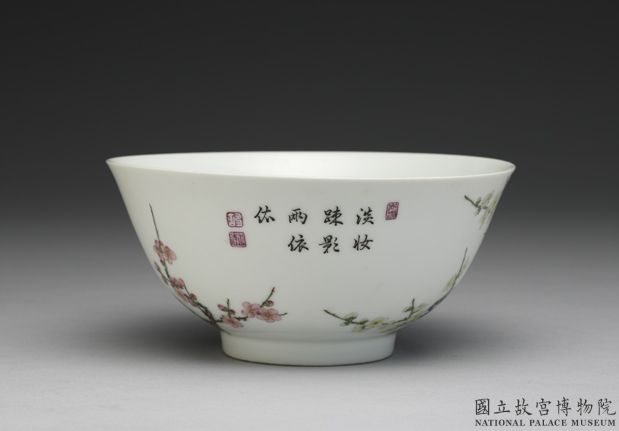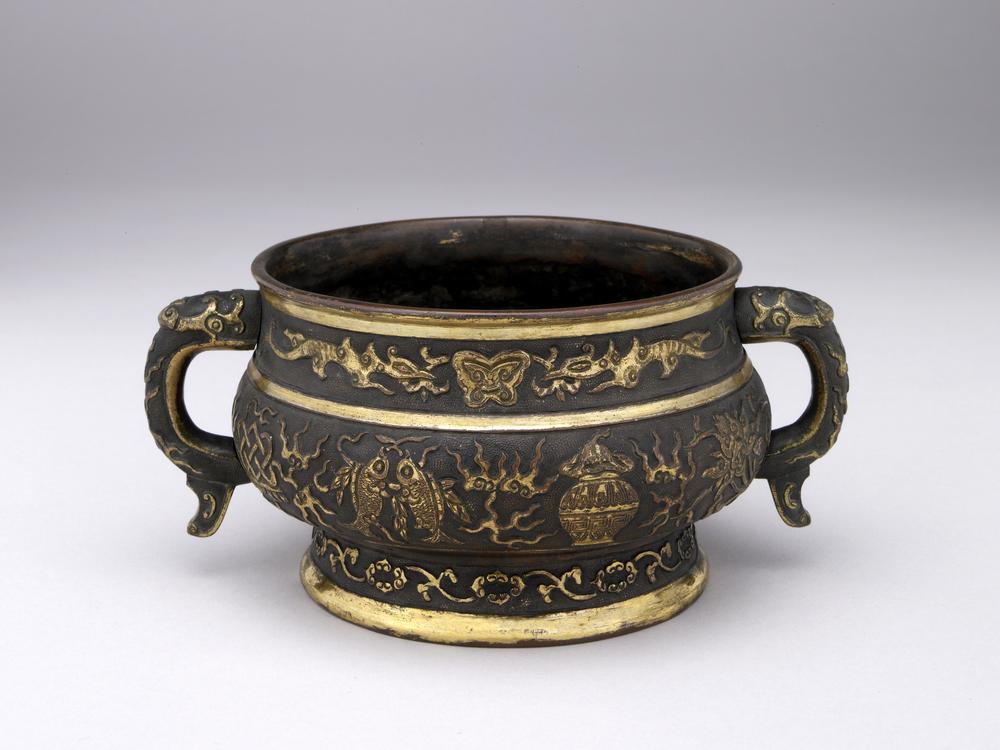Period:Ming dynasty Production date:1621-1628 (circa)
Materials:porcelain
Technique:glazed, underglazed,
Subjects:horse/ass literature
Dimensions:Diameter: 27 centimetres Height: 2.80 centimetres
Description:
Porcelain dish decorated in underglaze blue and inscribed. This flat dish is painted in the centre with three fan-shaped panels; in one is a man kneeling in front of his saddled horse, the second contains Chinese characters and the third a stag and a doe. A border of large and small triangles adorns the rim. The exterior is decorated with stylized emblems representing pictures symbolizing the cultural status of a scholar and coins representing wishes for wealth and material riches. The chatter-marked base is typical of ceramics made at the end of the Ming period.
IMG
![图片[1]-dish BM-Franks.1476-China Archive](https://chinaarchive.net/Ming dynasty/Ceramics/mid_00254046_001.jpg)
Comments:Harrison-Hall 2001:Such Confucian maxims on the harmony of the universe and the correct way to behave in society would have been popularly accepted in both China and Japan in the seventeenth century. Fan designs were appreciated in Japan where they appear on ceramics, lacquer and textiles. The rim border may be found on ajar with a dated mark of 1621 in the British Museum (see BM Franks.807).
Materials:porcelain
Technique:glazed, underglazed,
Subjects:horse/ass literature
Dimensions:Diameter: 27 centimetres Height: 2.80 centimetres
Description:
Porcelain dish decorated in underglaze blue and inscribed. This flat dish is painted in the centre with three fan-shaped panels; in one is a man kneeling in front of his saddled horse, the second contains Chinese characters and the third a stag and a doe. A border of large and small triangles adorns the rim. The exterior is decorated with stylized emblems representing pictures symbolizing the cultural status of a scholar and coins representing wishes for wealth and material riches. The chatter-marked base is typical of ceramics made at the end of the Ming period.
IMG
![图片[1]-dish BM-Franks.1476-China Archive](https://chinaarchive.net/Ming dynasty/Ceramics/mid_00254046_001.jpg)
Comments:Harrison-Hall 2001:Such Confucian maxims on the harmony of the universe and the correct way to behave in society would have been popularly accepted in both China and Japan in the seventeenth century. Fan designs were appreciated in Japan where they appear on ceramics, lacquer and textiles. The rim border may be found on ajar with a dated mark of 1621 in the British Museum (see BM Franks.807).
© Copyright
The copyright of the article belongs to the author, please keep the original link for reprinting.
THE END





